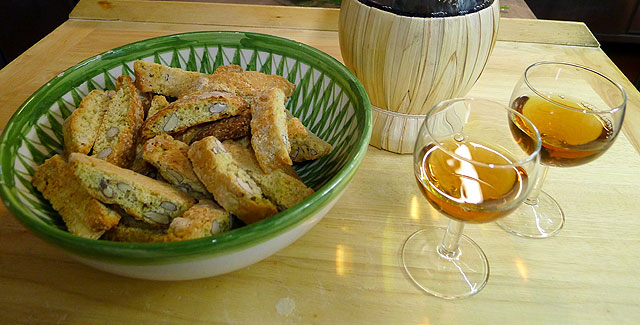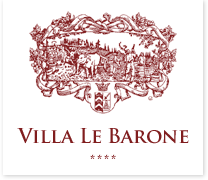
Have you ever tasted Vin Santo with Cantucci? If not, you miss something! An ancient and fabled wine, Vin Santo is one of the most voluptuous, although nearly unknown, dessert wine. Wine’s historical roots date as far back as the Middle Ages, and its name most likely can be attributed to the use of sweet wine during catholic masses.
According to the legend, Vin Santo can be traced to 1348 when the plague was rampantly devastating the whole of Europe, and when a friar from the province of Siena began distributing this sweet wine to the sick to alleviate their pain, hence the name of Vin Santo, or Holy Wine .
The Vin Santo wine is made from naturally dried grapes with a concentrated sugar content due to the evaporation of water. In 1990 Vin Santo produced in the “Colli di Etruria Centrale” obtained the D.O.C (Denominazione di Origine Controllata), which means that it must contain at least 50% of Tuscan Trebbiano, up to 5 % of Malvasia from Chianti and a combination of 5% Pinot Bianco or Grigio, Chardonnay and Sauvignon . The sugar content of the grapes must reach at least 28%.

Traditionally, Vin Santo is produced by picking the best bunches of grapes and spreading them on mats or hanging them on hooks, sometimes until march, to allow grapes to dry (traditionally the grapes were hung in waning or hard moon periods with the conviction that it was avoiding the grapes to rot). When dried, the grapes are pressed and the grape must (with or without grape juice depending on the tradition followed) is transferred to various small wood barrels (caratelli) of varying size (usually between 15 and 50 liters) from which the previous production of Vin Santo had just been removed. This allows to keep some yeast (madre) from previous year’s production and it is believed that this older wine can help jump start the fermentation process and add more flavors to the wine. Afterwards the ”caratelli” are sealed and generally housed in an attic as it is believed that strong summer-winter thermal differences of temperatures are good for the fermentation. At least 3 years three years of aging in those small barrels are necessary to produce good Vin Santo wines, but the best ones are left for aging sometimes for 10 years. The color of Vin Santo ranges from pale to dark amber, and exude intense and aromatic perfumes, and its flavors include nutty or raisin notes with honey and cream attributes. Usually, Vin Santo is served, as we do in Villa le Barone, with “Cantucci” , crunchy biscuits with almonds typical of Tuscany.
